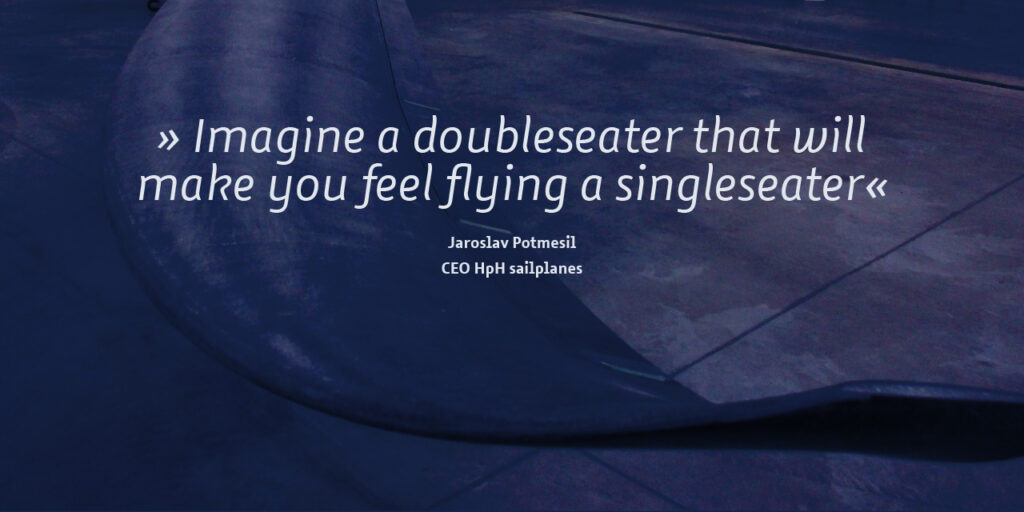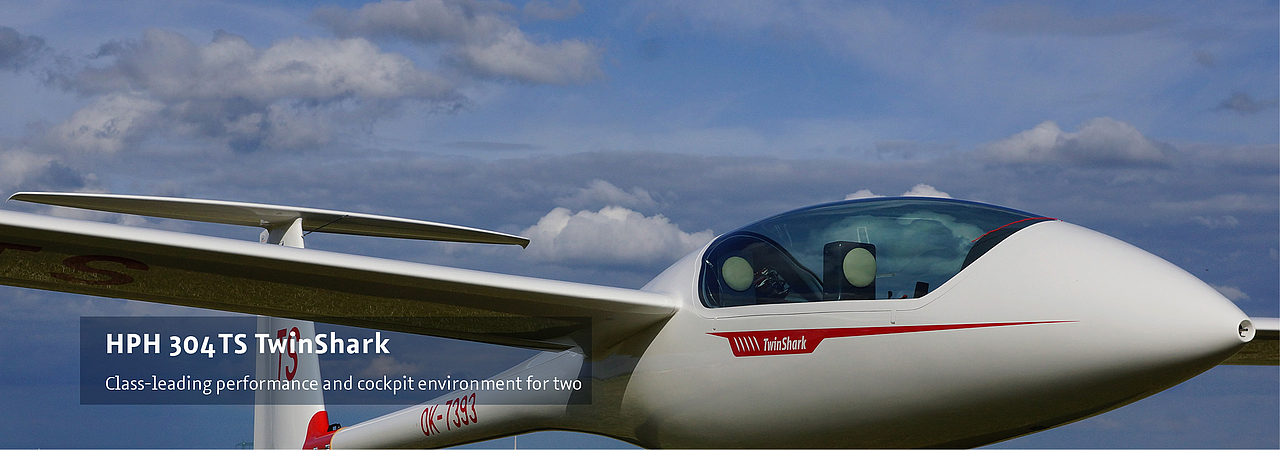
If you are interested about HpH 304 Twin Shark and you want make a test flight or price inquiry please click here.
Why did we decide to build a new double-seater from the scratch? There are already several performing models on the market. Nevertheless, we believe that no one really thought of a double-seater as of a competition-ready, high-performance sailplane model. That is exactly what we had in mind, when we started to think of a double-seater as appealing and performing as a single-seat glider. Our Twin Shark has not only the performance to fly in the FAI double-seater 20m-class, it also is as comfortable to sit in and to fly as any single-seater from our factory – whichsoever of the both seats you prefer.
The aerodynamic performance of our Twin Shark is the result of extensive aerodynamic studies and wind-tunnel tests. It builds on the experience gained in our Shark family. A wing area of 15.38 plus an aspect ratio of 26.5 deliver class-leading performance, and advanced manufacturing techniques provide wing-loadings as low as 36kg/m2. At 850 kg maximum load, the loading is 52 kg/m2. An optimal curved leading edge and Shark winglets are maintained through high-end CNC techniques. Further performance is gained through the reflex-negative winglets on the tailplane which mimic a »shark« silhouette.
The spacious cockpit easily accomodates tall pilots, and those of generous build. A single-piece, side-opening canopy and extended reflex over the wing deliver outstanding visibility for both pilots. The key cockpit features which made the Shark cockpit popular have been maintained in the Twin Shark. Additionally, a cockpit ventilation system, in addition to the canopy vent keeps temperatures comfortable. This is where you enjoy staying for hours – make it a comfortable experience!

If you need a powerful Selflauncher you’ll go for the proven Binder 2625-02 engine system based on the Solo motor which provides 62 hp.
The 32-litre fuselage tank capacity can be supplemented with wing-tanks for range extension. Both motor extension and starter are operated by Lithium Manganese batteries which offer substantial weight saving capability.
For a high reliability industry-standard components are implemented in our Twin Shark. It also comes with an Ilec engine control system that is easy and safe in handling.
Motorleistung: | ca 47KW / 62PS |
max. Dauerdrehzahl: | 6500 l/min |
Vergaser: | 2 Mikuni |
Verdichtung: | 9,5 : 1 |
Zündung: | Ducati, Bosch W5 AC |
Getriebe: | Zahnriemen 3:1 |
Kraftstoffverbrauch: | 24,5 l/h |
Gewicht: | 24 kg |
Generator: | 12 V 150 W |
Schmierstoff: | 1:50 Super-2Takt-Öl |
Propellerturm: | Kohlefaser |
Propeller: (Technoflug) | 2-Blatt Kunststoff |



With the introduction of the HPH 304TS FES, HPH move into the electric double seater arena. Its experience with powered sailplanes and long term partnership with LZ Design continue the approach of working with the best companies to bring the HPH 304TS FES to market quickly and with a very high “out-of-the-box” product maturity.
The TwinShark FES delivers a significant battery-powered self-retrieve capability to get you to an airfield or in many cases back to soaring conditions or to your home base.
Using experience gained during development on the Certified Front electric sustainer (FES) System, LZ Design were able to work with HPH to determine the best way of adapting the TwinShark sailplane to offer the electric “Self-Retrieve” capability.
We use two FES GEN4 batteries, each coming with a dedicated balancing charger. The batteries only loose about 1% of their charge in a month. We tested the charging/discharging of cells, and there was still more than 80 % of the original capacity after 4000 cycles. Installing the batteries takes about 5 minutes.
The LXNAV FES controller is left powered for the duration of the flight. After take-off, the FES power is enabled via a toggle switch, whereupon the FES system is ready to offer immediate thrust by rotating the knob clockwise. This knob controls the power level. Rotating anti-clockwise stops the motor. The blades are then parked automatically.
The FES propeller is interlocked to prevent inadvertent operation on the ground. The FES system automatically parks the blades and nose to ensure optimal aerodynamic performance.
The FES propeller blades are protected during transport or when on the airfield with a removable cover. The Cobra trailer nose cone incorporates cut-outs for the propeller during transit.
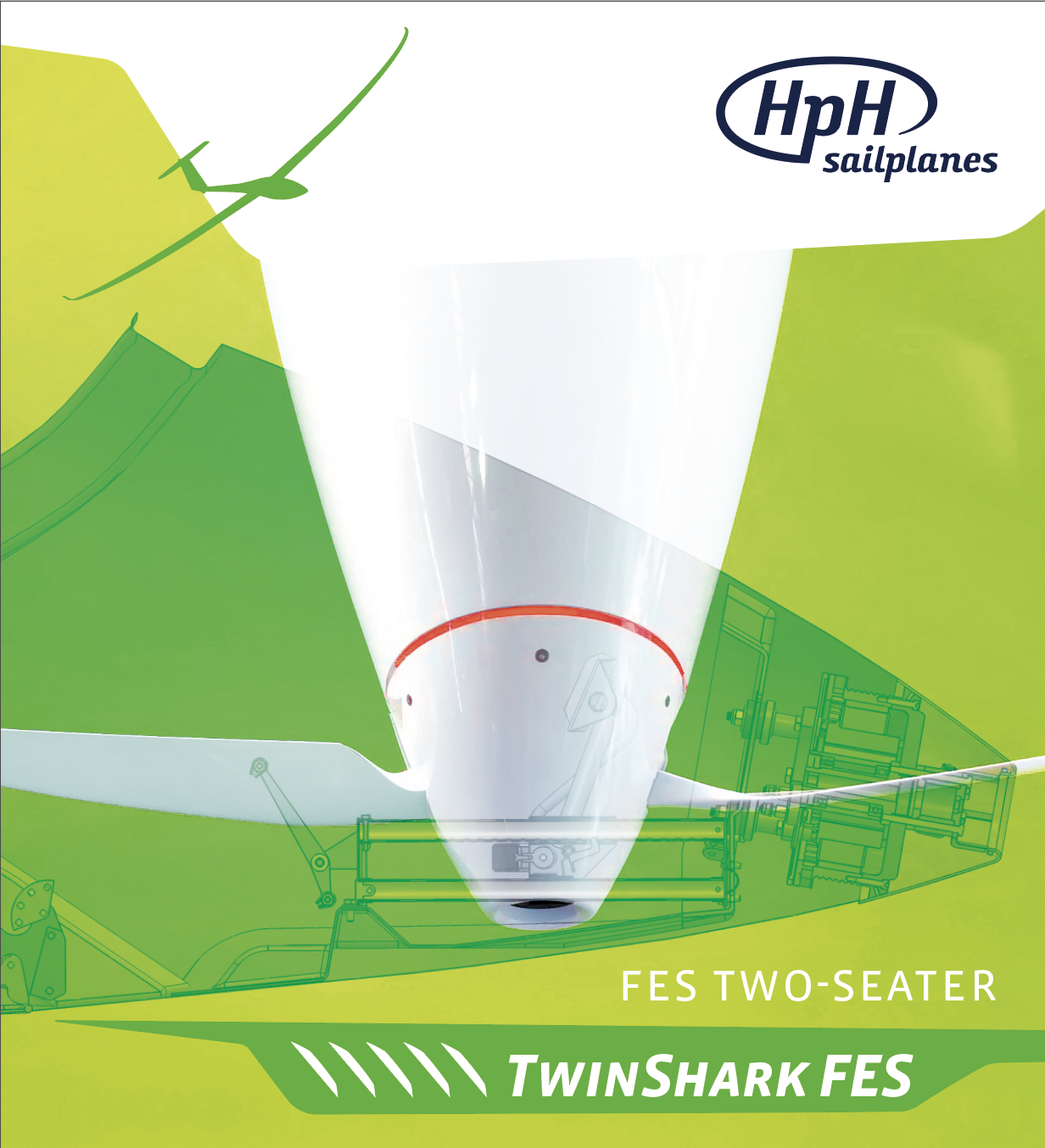

Our single-seated Shark 304SJ has demonstrated the advantages of a jet sustainer compared to 2-stroke solutions: – the engine start is largely automated – the is no noticeable drag during engine deploying – cruising at high speeds is possible.
Our single-seater Shark is industry leader in the jet sustainer technology and our Twin Shark will offer a very similar jet technology. In order to maintain a performance similar to that of the single-seated Shark SJ, the jet thrust will be increased.
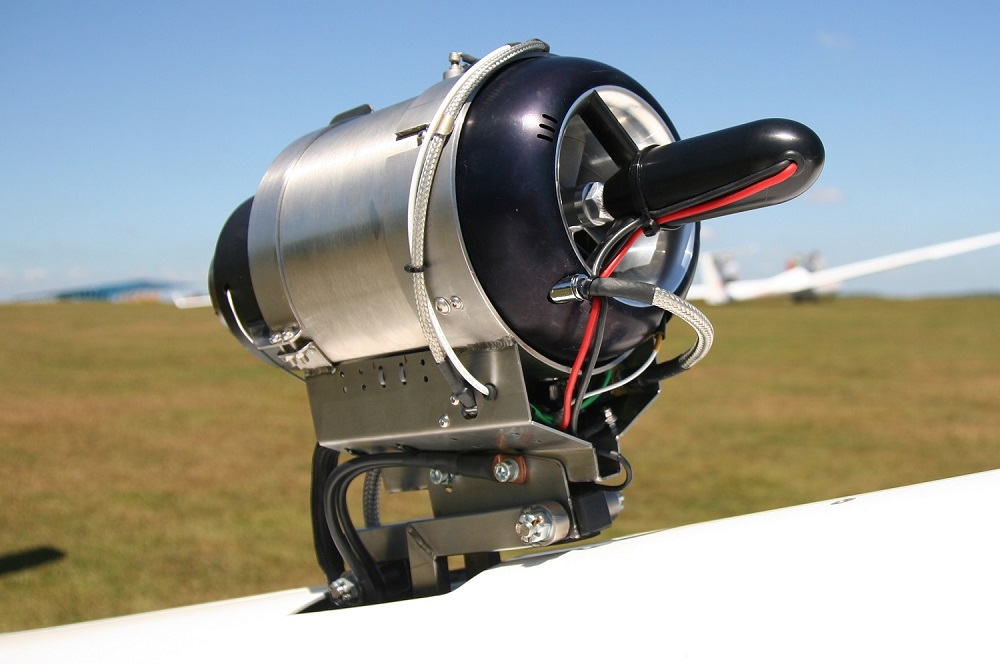
jet engine IN DEVELOPMENT | selflauncher | |
Geometry | ||
Wing span | 20 m (65.6 ft) | 20 m (65.6 ft) |
Wing area | 15,3 m2 / 165 ft2 | 15,3 m2 / 165 ft2 |
Aspect ratio | 26,5 | 26,5 |
Fuselage length | 8,95 m / 29.36 ft | 8,95 m / 29.36 ft |
Profile | PW10-145/125 14,5-12,5% | PW10-145/125 14,5-12,5% |
Weights | ||
Empty weight | 495 kg / 1091 lb | 495 kg / 1091 lb |
maximum take-off weight | 850 kg /1874 lb | 850 kg / 1874 lb |
Water ballast | 240 l / 63,4 US gal | 240 l / 63,4 US gal |
Min. wing loading | 39 kg/m2 / 8 lb/ft2 | 39 kg/m2 / 8 lb/ft2 |
Max. wing loading | 55.5 kg/m2 / 11.4 lb/ft2 | 55.5 kg/m2 / 11.4 lb/ft2 |
Glide Performance |
| |
Best glide ratio | 49 | 49 |
at speed | 128 km/h / 69 kt | 128 km/h / 69 kt |
min. sink rate (at min. weight) | 0,5 m/s /98 ft/min | 0,5 m/s / 98 ft/min |
at speed | 92 km/h / 50 kt | 92 km/h / 50 kt |
Limitations |
| |
Stall speed (at max. weight) | 68 km/h / 37 kt | 68 km/h / 37 kt |
VNE | 275 km/h /148 kt | 275 km/h / 148 kt |
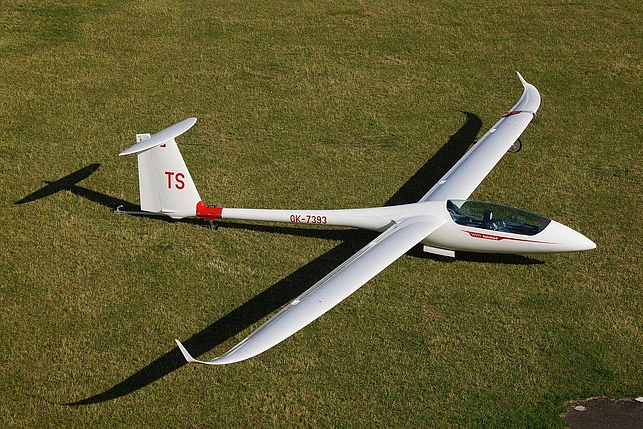

Specifications preliminary and subject to change without prior notice.
